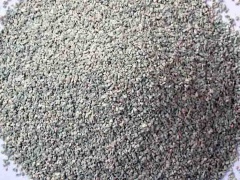Difference between revisions of "Zeolites"
(→Applications) |
|||
| Line 7: | Line 7: | ||
| risk factors = See text | | risk factors = See text | ||
}} | }} | ||
| + | __TOC__ | ||
==Description== | ==Description== | ||
Zeolite is a type of rock that is formed in crystals. It is formed in nature when a volcano erupts and the hot lava and volcanic ash hits sea water. When this happens, the lava and ash are cooled very quickly and harden. The rock-like structure that forms is called a zeolite and it forms with a very unique property. Zeolites are one of the very rare negatively charged particles. It also forms with many channels and caves, very similar to a honeycomb.<br><br> | Zeolite is a type of rock that is formed in crystals. It is formed in nature when a volcano erupts and the hot lava and volcanic ash hits sea water. When this happens, the lava and ash are cooled very quickly and harden. The rock-like structure that forms is called a zeolite and it forms with a very unique property. Zeolites are one of the very rare negatively charged particles. It also forms with many channels and caves, very similar to a honeycomb.<br><br> | ||
Latest revision as of 10:27, 12 February 2014
| Infobox on Zeolites | |
|---|---|
| Example of Zeolites |  |
| Facts | |
| Origin | - |
| Stowage factor (in m3/t) | - |
| Humidity / moisture | - |
| Ventilation | - |
| Risk factors | See text |
Zeolites
Description
Zeolite is a type of rock that is formed in crystals. It is formed in nature when a volcano erupts and the hot lava and volcanic ash hits sea water. When this happens, the lava and ash are cooled very quickly and harden. The rock-like structure that forms is called a zeolite and it forms with a very unique property. Zeolites are one of the very rare negatively charged particles. It also forms with many channels and caves, very similar to a honeycomb.
Naturally occurring zeolites are rarely pure and are contaminated to varying degrees by other minerals, metals, quartz, or other zeolites. For this reason, naturally occurring zeolites are excluded from many important commercial applications where uniformity and purity are essential.
Hence, there are also synthetic zeolites. These are zeolite structures that scientists make in the lab that have the same characteristics as natural zeolites. Synthetic zeolites are made either by a gel process (sodium silicate and alumina) or a clay process (kaolin), which form a matrix to which the zeolite is added. These processes are quite complex, involving substitution of various rare-earth oxides. The effectiveness of zeolites depends upon their pore size.
Zeolites are widely used in industry for water purification, as catalysts, for the preparation of advanced materials and in nuclear reprocessing. They are used to extract nitrogen from air to increase oxygen content for both industrial and medical purposes. Their biggest use is in the production of laundry detergents. They are also used in medicine and in agriculture.
Other applications of zeolites are as adsorbents, desiccants, and in solar collectors, where they function as both heating and cooling agent.
Applications
Commercial and Domestic
It is widely been used as ion-exchange beds in both domestic and commercial water purification, softening, and other applications. In chemistry, it separates molecules, only of certain sizes and shapes can pass through, as traps for molecules so that they can be analyzed, or as catalysts by confining molecules in small spaces that causes changes in their structure and reactivity.
Zeolites even carries the potentiality of providing precise and specific separation of gases including the removal of H2O, CO2 and SO2 from the lower grade natural gas streams. Some other separations includes HCHO, Noble gases, N2, Freon and Formaldehyde. However, the true potential for improving the handling of such gases in this manner remains unknown.
Agriculture
Clinoptilolite, a naturally occurring zeolite, is used as a soil treatment in agriculture. It provides a source of slowly released potassium. If the zeolite is previously loaded with ammonium, it can serve a similar function in the slow release of nitrogen. Cuban studies even suggests that some crops may be grown in 100% zeolite or zeolite mixtures, where the zeolite is previously loaded or has been coated with fertilizer and micronutrients.
Medical
Zeolite-based oxygen generation systems are used in producing medical grade oxygen. It is used as a molecular sieve for extracting oxygen from air, in a process which involves adsorption of atmospheric nitrogen. The usage of zeolite is also being explored for a quick clotting of severe bleeding.
Heating and Refrigeration
Zeolites can also be used as solar thermal collectors and for adsorption refrigeration. Their high heat of adsorption and ability to hydrate and dehydrate is exploited while maintaining the structural stability. This hygroscopic property along with an inherent exothermic reaction, while transitioning from dehydrated to a hydrated form, make the natural zeolites effective in the storage of solar and the waste heat energy.
Detergents
Synthetic zeolite is widely used as the global laundry detergent.
Gemstones
Thomsonites is collected as gemstones from a series of lava flows along the Lake Superior (Minnesota) and in a lesser degree in Michigan (USA).
Shipment / Storage
Zeolite is shipped and handled as Minerals; hence, see also this item for transport advice.











